When trying to read clothing labels these days, it’s easy to get buried in and confused by all the (potentially) sustainable fabrics.
And so much of the innovation is just, well… strange. Fabrics made from apples and pineapples? What?!
What’s more, there are different manufacturing processes, certification schemes, and conflicting practices for almost every.single.one.
But in order to promote a more sustainable fashion industry, it’s critical we as consumers understand these differences—at least on a basic level.
After all, materials are what most determine the environmental impact of our clothes, directly contributing to: consumption of water, microplastic pollution, greenhouse gas emissions, soil degradation, rainforest destruction and lastly landfill waste of epic proportions.
By choosing eco-friendly fabrics alone, we’re taking a huge step toward a more sustainable wardrobe.
So while we definitely should be asking #whomademyclothes, perhaps the first question we should ask is, “What are my clothes made of?”.
What Are Eco-Friendly Fabrics?
What makes a fabric sustainable?
Well, first let’s touch on what makes an unsustainable clothing fabric.
Conventional fabrics used in fashion and home goods—i.e. cotton, viscose fabric, leather, among many others—have historically been developed with profit (not planet) in mind, entailing:
- Environmentally devastating sourcing of raw materials (unsustainable farming, deforestation, and petroleum drilling)
- Chemically-intensively material processing (plasticizing, bleaching, softening, and dyeing)
- Poor end-of-life prospects (ways a garment can be disposed of) leading to tremendous amounts of textile waste—to the tune of almost 15 million tons per year in the US alone.
With that in mind, we define sustainable fabrics as:
Textiles that significantly minimizes the impact of its conventional alternatives, whether through organic and chemical-free farming, use of recycled materials, circular manufacturing processes, and sustainable prospects for end-of-life disposal.
Now let’s get into the nitty-gritty (or should we say, knitty-gritty?) of which fabrics are most sustainable. For more visual learning, watch our video on the topic below.
Contents: Sustainable Textiles
- Organic Cotton Jump to section
- Recycled Cotton Jump to section
- Hemp Jump to section
- Linen Jump to section
- Bamboo Linen Jump to section
- Cork Jump to section
- ECONYL® Jump to section
- Recycled Polyester (rPET) Jump to section
- Deadstock Fabrics Jump to section
- Lyocell Jump to section
- Modal Jump to section
- Bamboo Lyocell Jump to section
- ECOVERO™ Jump to section
- Piñatex Jump to section
- Bananatex® Jump to section
- SCOBY Leather Jump to section
- S.Cafe® Jump to section
- Brewed Protein Jump to section
- Apple Leather Jump to section
- Woocoa Jump to section
- Cupro Jump to section
- QMilk Jump to section
- Sheep Wool Jump to section
- Merino Wool Jump to section
- Alpaca Wool Jump to section
- Cashmere Jump to section
- Camel Wool Jump to section
- Yak Wool Jump to section
- Upcycled Or Vegetable Tanned Leather Jump to section
- Down Jump to section
- Peace Silk Jump to section
Natural Sustainable Fashion Fabrics
Organic Cotton
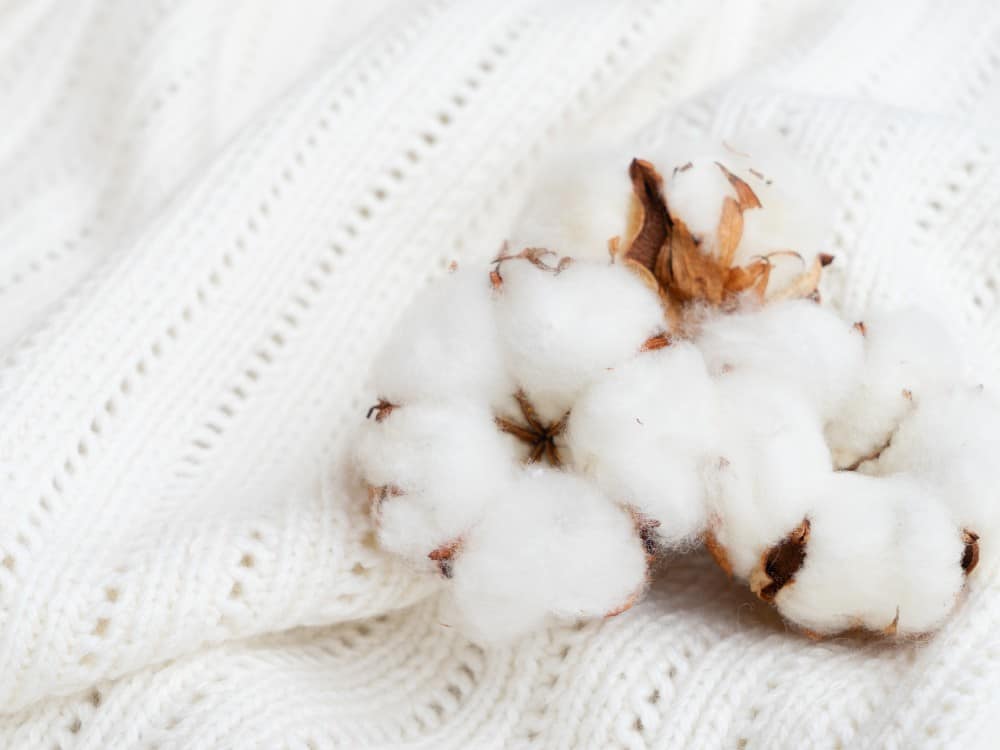
At the top of our list is organic cotton, one of the most sustainable natural fabrics out there.
Unlike conventional cotton production (AKA the “world’s dirtiest crop”), organic cotton is grown without pesticides and synthetic fertilizers and processed with no chemicals—overall using 62% less energy and 88% less water.
There are several certifications available to tell us that the cotton was A) grown without any chemicals or machine harvesting; and B) processed without any chemicals leaving the final garment chemical-free.
Organic cotton that’s approved by the Global Organic Textile Standard (GOTS-certified for short) is most common.
Other pertinent certifications (but not directly certifying organic status) like fair trade ensure fair pay and safe conditions for farmers (though not being exposed to chemicals in the field is already a huge component in that regard).
You’ll find this fabric in textiles of all kinds, from clothing like pajamas to homewares like comforters.
Certifications: USDA-Certified Organic, Global Organic Textile Standard (GOTS), Organic Content Standard (OCS)
Recycled Cotton
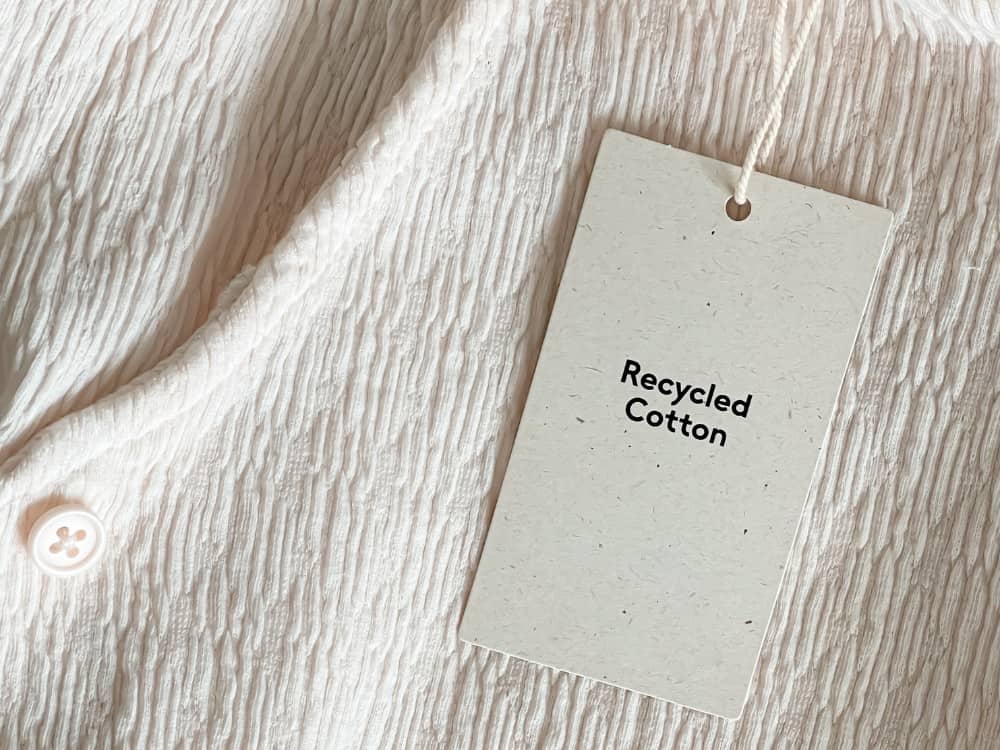
Some of best sustainable fabrics are those made from natural AND recycled materials.
Recycled cotton is produced using either post-industrial or post-consumer waste.
This means that your favorite underwear or jeans could be made from industry fabric scrap or other recycled cotton garments.
This not only means no demand for cotton farming, but also means textile waste is diverted from landfills.
However, there are a few downsides. Certification is difficult because it’s hard to know where the recycled cotton comes from. It can also be tricky to know the extent to which the fabric contains toxic residues.
It also becomes difficult to know whether recycled cotton is pure cotton (and could thus be composted) because a garment can be recycled into recycled cotton even if it bears 4% or less synthetic fibers.
Looking for the bluesign® Approved or OEKO-TEX certification logos can reassure you of non-toxicity in cases of fibers of mysterious origin, especially given how chemically-intensive conventional cotton is.
Certifications: Global Recycle Standard (GRS), Recycled Content Standard (RCS), OEKO-TEX, bluesign®
Hemp
Hemp fabric is one of the most eco-friendly natural fabrics. It’s high-yielding, not water or chemical intensive, and provides phytoremediation benefits to soil (AKA restores soil nutrients and cleans impurities like heavy metals and other toxins).
It’s considered a carbon negative raw material. It actually absorbs CO2 from the atmosphere, more so than your average plant.
Because it has so many wearable benefits (like being naturally sun protective and antimicrobial) and is harder to grow, hemp tends to be slightly more expensive than other sustainable organic fabrics, though we can expect to see more of it in the future.
For years, there was no mechanism by which you could certify organic hemp, but that’s changed in recent years and now a number of certifying agencies under the arm of the US Department of Agriculture oversee this organic hemp farming process.
Certifications: USDA-Certified Organic
Linen
Linen is almost identical to hemp in terms of sustainability, as well as in their super light and breathable final fabrics.
The only difference?
Linen is derived from the flax plant, whose growth requires little to no fertilizer, pesticide, and irrigation inputs.
However, unlike hemp, organic linen isn’t as high-yielding and grows in more specific climates (Europe, mainly), which makes it a bit more of a luxury commodity.
But that doesn’t stop this centuries-old eco-friendly fabric becoming a favorite for everything from clothing to sheets.
Certifications: USDA-Certified Organic, Global Organic Textile Standard (GOTS), Organic Content Standard (OCS)
Bamboo Linen
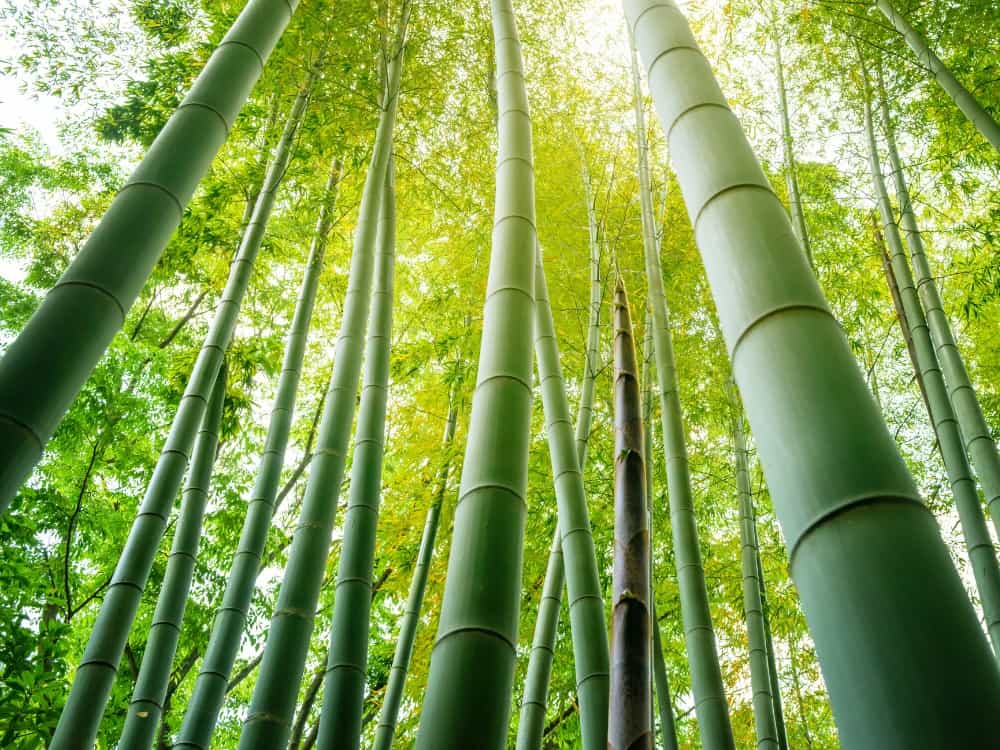
When bamboo is harvested, it can be done without killing the plant itself. That means bamboo can renew super quickly, making it one of the fastest growing plants on the planet.
Like hemp, bamboo consumes more CO2 than most trees and doesn’t require a lot of inputs. It can also survive on rainfall alone.
When sourced from certified sustainably managed forests, bamboo can be turned into a sustainable material—so long as it’s mechanically-processed, not chemically-processed.
Look for organic bamboo fabric in raw form, as opposed to that which is plasticized into bamboo rayon/viscose using harmful chemicals.
More on this later, as it’s important to know the distinction, given the sustainable form of bamboo makes up only a tiny amount of what we find on the market.
Certifications: Forest Stewardship Council (FSC), Global Organic Textile Standard (GOTS), Organic Content Standard (OCS)
Cork
Cork fabric is sustainably harvested from a cork oak (yes, it’s from a tree) by simply shaving away the bark. In fact, Quercus suber can (and should) be harvested to extend its life.
While the tree is re-growing the bark, it consumes more carbon dioxide than most types of trees, meaning cork plantations act as a carbon sink.
Not only that, but cork is a valuable member of a unique ecosystem, supporting a range of plant and animal species.
Once harvested from a mature tree every 9 to 12 years, the cork can be laid out in the sun to dry, and then just requires water to transform it into something suitable for fashion.
As one of the more sustainable vegan leather alternatives, it’s become a popular choice for vegan handbags and shoes.
Certifications: Forest Stewardship Council (FSC)
Recycled Synthetic Sustainable Fashion Fabrics
ECONYL®
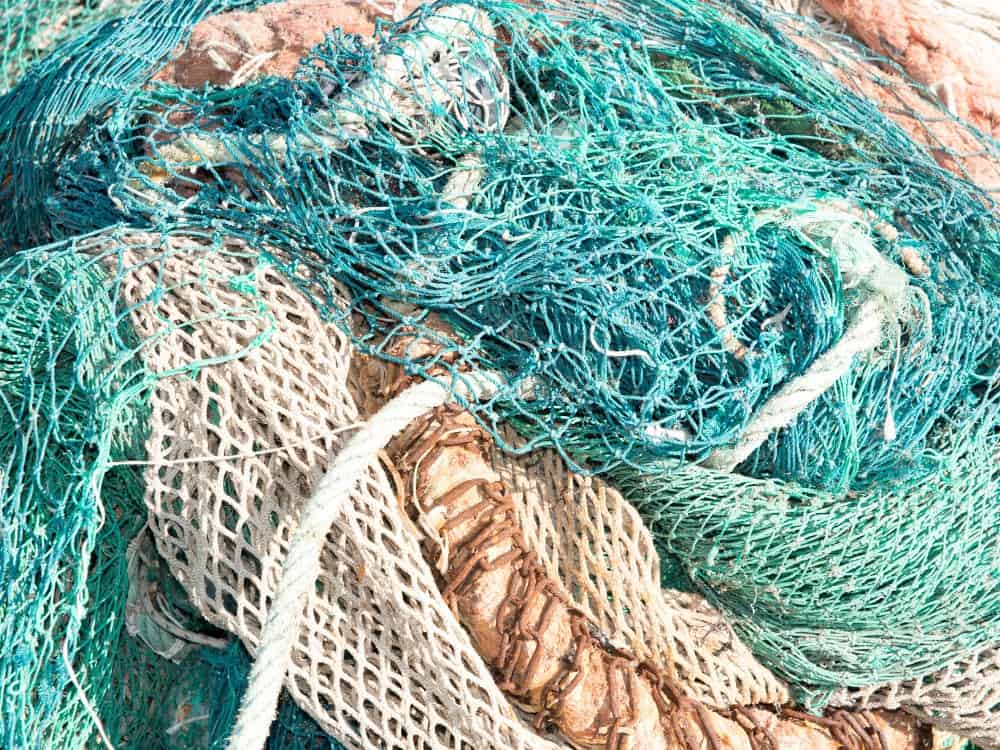
Synthetic fabrics largely represent the opposite of what we look for when considering sustainability. They’re made of petroleum, release thousands of microplastics in waterways with each wash, and will sit in landfills for hundreds of years.
But since synthetics have a function in fashion (such as activewear and swimwear fabrics, where something stretchy and quick-drying is needed), we turn to their recycled alternatives.
While we wouldn’t call regular nylon eco-friendly, its recycled nylon counterpart—made by ECONYL®—is another story.
It uses synthetic waste from ocean plastic, abandoned fishing nets, and waste fabric and reforms them into recycled nylon fabric that feels exactly the same.
It’s also made using a closed-loop system and doesn’t require as much water.
While we’re excited about recycled fabrics and all the possibilities it’s opened up, it still releases microplastics—meaning it’s up to us as consumers to mitigate that by religiously washing these items in a Guppyfriend washing bag or using a microfiber filter on our washing machines.
Certifications: Global Recycle Standard (GRS), Recycled Content Standard (RCS), OEKO-TEX, bluesign®
Recycled Polyester (rPET)
Single-use plastics are wreaking havoc on our environment, and many brands have worked out ways to give landfill-bound plastic bags, bottles, and textiles a second life.
Recycled polyester or rPET is often made from recycled plastic bottles.
Like virgin polyester (and most synthetic fabrics), rPET is versatile and can take the form of many different feels and functions—from thin and light stretchy activewear to thick and fluffy fleece.
It’s been the go-to sustainable activewear fabric for brands like Patagonia and Reformation for years.
However, aside from also releasing microplastics, PET can only be recycled so much before it degrades in quality to the point of needing to be discarded.
There are also concerns about some of the toxic substances in PET bottles and the effects upon the wearer (like BPA in sports bras), so non-toxic certifications are important here.
Certifications: Global Recycle Standard (GRS), Recycled Content Standard (RCS), OEKO-TEX, bluesign®
Deadstock Fabrics
Deadstock fabric rounds out the trifecta of common recycled types of sustainable fabrics.
While both recycled polyester and nylon can be made of other garments, deadstock exclusively is. It refers to garments created using other garments or discarded fabric, whether they be off-cuts and manufacturing scraps, vintage clothing, or unsold clothing (AKA “deadstock”).
Because it requires no processing (the dyes and patterns simply are what they are), it has a lower manufacturing footprint and keeps valuable materials from landfills.
As with recycled cotton, additional certifications regarding non-toxicity testing can assure you no toxic residues from the original fabrics remain.
Certifications: OEKO-TEX, bluesign®
Sustainable Semi-Synthetic Clothing Fabrics
Lyocell
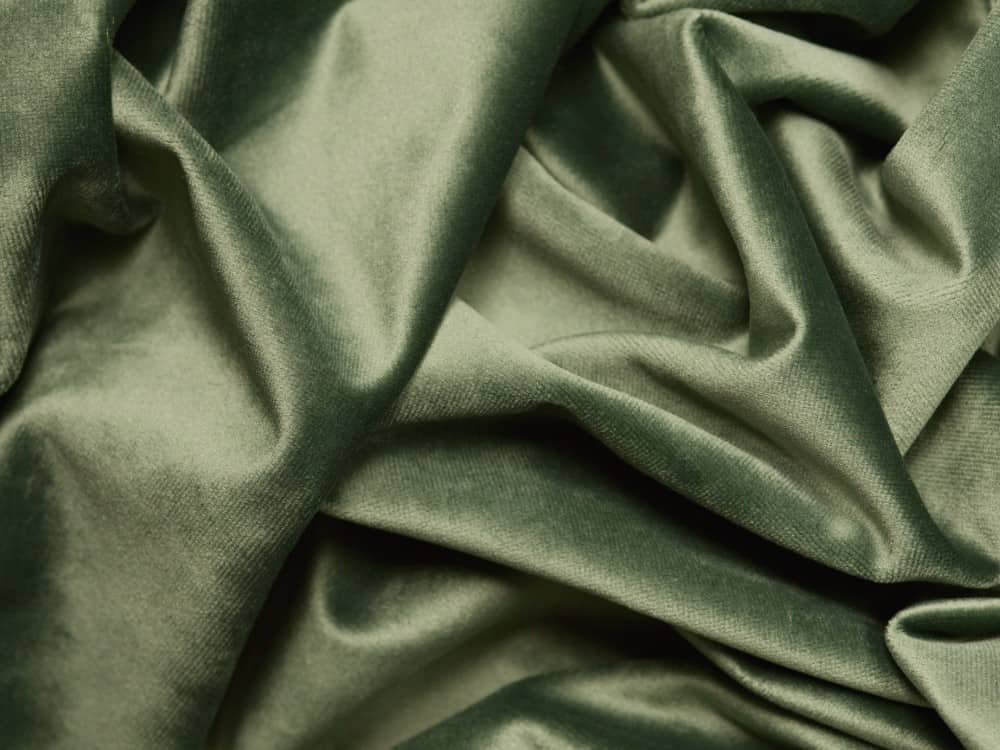
Of all the newer sustainable fabrics, lyocell fabric has gained the most traction—and for good reason.
Technically a type of rayon fabric (which is not historically among the most eco-friendly fabrics), lyocell s a semi-synthetic or cellulosic fabric made from the wood pulp of (usually) eucalyptus trees, which don’t require a lot of water and pesticides.
But not all lyocell is created equal.
Trademarked by its Austrian manufacturer Lenzing, TENCEL™ lyocell is the most sustainable option.
TENCEL™ lyocell means sourcing from sustainably-managed forests and a closed-loop production process that reuses 99.5% of the water and dissolving agents.
Certifications: Forest Stewardship Council (FSC), OEKO-TEX, bluesign®
Modal
Modal fabric is another semi-synthetic fabric known for comfort and breathability. As an affordable silk alternative, it’s a popular choice for drapey garments like dresses.
Just as lyocell is made from eucalyptus wood pulp, modal is made from beech trees.
While less wasteful and chemically-intensive than traditional rayon/ viscose production, its chemicals are more caustic than those used for lyocell manufacturing.
As with lyocell, it’s not always done in a closed-loop system either, meaning again you should seek out transparent users of lyocell or opt for carbon-neutral TENCEL™ modal.
Certifications: Forest Stewardship Council (FSC), OEKO-TEX, bluesign®
Bamboo Lyocell
Bamboo lyocell is also made in a closed-loop manufacturing process that reuses chemicals and water, but like regular lyocell, bamboo is not always made this way.
Bamboo viscose is another name used for bamboo fabric and is almost never made with a closed-loop process.
While both require chemicals to plasticize the wood pulp into silky fibers, a closed-loop process ensures they get recycled. Bamboo lyocell also utilizes fewer toxic chemicals.
A few brands making pajamas and socks use this more sustainable way of processing, but it’s important to do a double-take and check whenever bamboo is involved.
Certifications: Forest Stewardship Council (FSC), OEKO-TEX, bluesign®
ECOVERO™
Lenzing’s other sustainable fabric joining their line of semi-synthetics is ECOVERO™.
Responsible for 50% fewer carbon emissions and water use than standard viscose, these fibers come from varied sustainable wood and pulp sources and meet the highest environmental standards.
As with anything TENCEL™, you can rest assured it was made using closed-loop processes.
Certifications: Forest Stewardship Council (FSC)
Piñatex
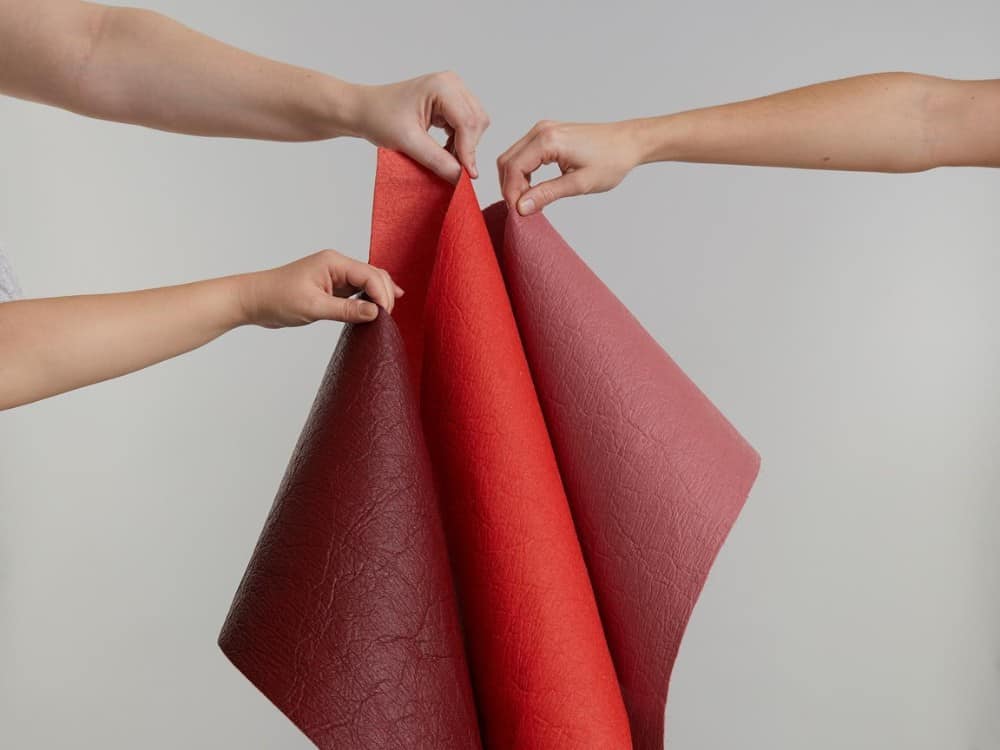
Piñatex, a creation of the sustainable fabrics supplier Ananas Anam, uses pineapples to create a cruelty-free replacement for leather.
Not only that, but it’s a food industry byproduct, made from scrap pineapple leaves that are otherwise burned.
Piñatex utilizes wood-based PLA resins to add durability (meaning the whole thing can biodegrade), but some brands cover Piñatex with non-biodegradable resins to be avoided if possible.
Bananatex®
An award-winning new kid on the plant pulp fabric block, Bananatex® has the potential to become one of the best sustainable fabrics if widely adopted.
It starts with byproduct stalks of organically-grown Abacá banana plants grown in the Philippine highlands. They’re not only self-sufficient plants, but are used to reforest and increase biodiversity in areas previously damaged by monoculture palm oil plantations.
Unlike some of the other plant-based vegan leathers that still use plastic coatings to waterproof, Bananatex® uses only beeswax.
If you doubt its positive end-of-life prospects, its Cradle to Cradle® Gold certification can allay those fears.
The dyeing process is OEKO-TEX certified, too.
Certifications: Cradle to Cradle®, OEKO-TEX
SCOBY Leather
Those otherworldly floaties at the bottom of your ‘booch bottle provide a sustainable alternative to leather.
Kombucha is fermented using a mass of live cultures called SCOBY (Symbiotic Culture of Bacteria and Yeast), and that same mushy gob can be turned into leather.
Laid on a mold, the SCOBY leather dries and becomes something that can be transformed into tea-based shoes, wallets, and clothes. SCOBY leather doesn’t require animals, is biodegradable and compostable, requires zero heavy metals and other tanning chemicals, and is significantly cheaper than animal leather.
S.Cafe®
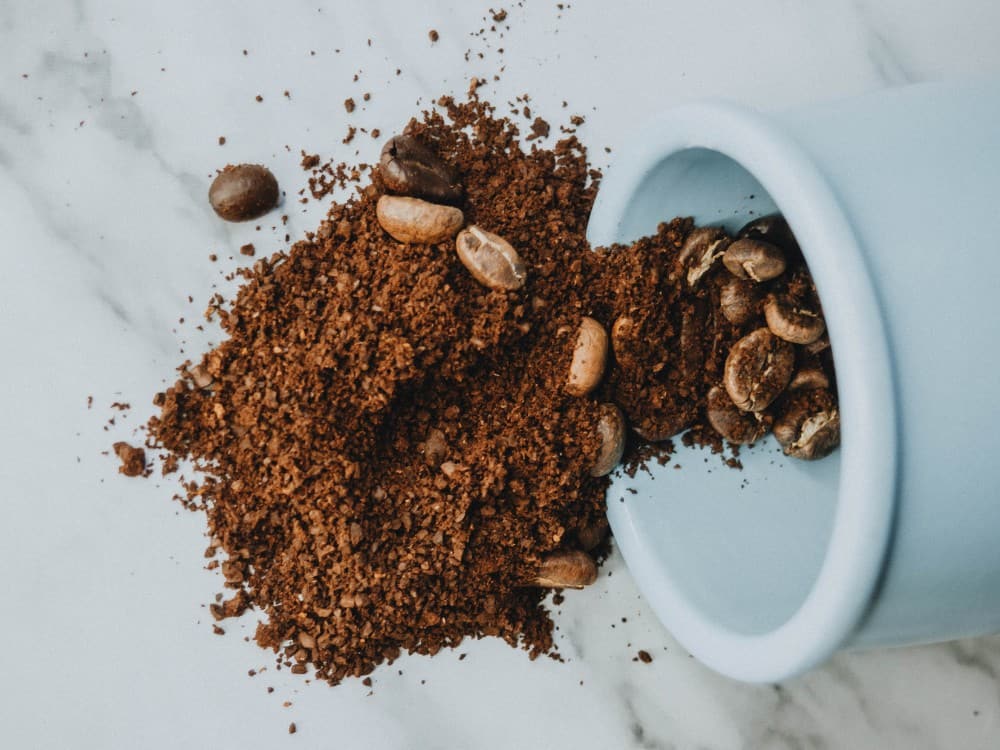
That cup of coffee can go a little further with S.Cafe®.
The process involves turning used coffee grounds into sustainable yarn that dries quickly and provides natural UV protection.
The only downside is that you may smell like a latte all day—and is that really a downside?
Brewed Protein
Japan’s Spiber Inc. is at the forefront of the sustainable fabrics industry.
Take Brewed Protein, for example, a silky protein fiber resulting from fermenting plant-derived (sugarcane) biomass.
Its versatility is one of its sustainable strong suits, as it can be processed into fine silk-like strands, cashmere-like yarns, fleece, denim, fur or leather alternatives, or hardened into a resin similar to that of a tortoise shell.
Aside from the wide applications, it bears the sustainable sugarcane Bonsucro certification, is completely biodegradable, and produces fewer greenhouse gasses than comparable animal-derived protein fibers.
The polymers are also produced as a remediating cover crop in the US, specifically in areas of intensive agricultural overproduction and soil degradation.
Since it’s so new, you likely won’t find it in too many places, though Spiber has started collaborating with brands on several projects.
Apple Leather
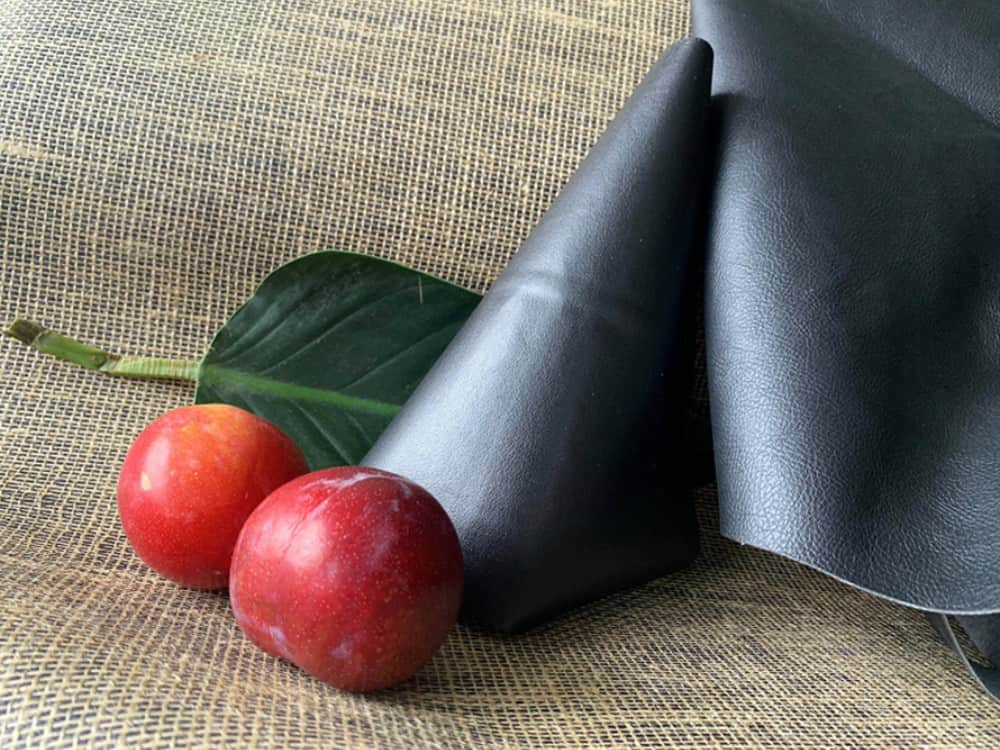
Apple Leather (sometimes called Frutmat or Pellemela) is made from a waste materials of the apple juice industry.
On its own (beware of added coatings), it’s fully biodegradable, as well as waterproof, breathable, and one of the most durable sustainable fabrics.
That’s why you’ll pretty much only find it in high-wear items like handbags, wallets, and sneakers.
Woocoa
Plant-based vegan wool may be the future of sustainable materials.
Woocoa is one of these, made from hemp, coconut fibers, and mushroom enzymes.
While this one isn’t widely available yet, it’s part of a growing trend. Mushrooms have made it into a lot of vegan fabrics, so stay tuned for more fungi fashion.
Cupro
Cupro fabric (also known as cupra) is a vegan silk alternative made with either recycled cotton garments, or cotton linter—a short fuzz that sticks to cotton seeds and a wasted byproduct of cotton farming.
The natural cotton fibers are subjected to chemicals which turn it into a semi-synthetic fabric. Of course, it’s done through a closed-loop process that recycles nearly all the water.
While this is done in a closed-loop process, this recycled fabric is perhaps the least sustainable fabric on this list.
For some, the main purpose of cupro fabric is just to make money from accumulated waste in countries like China (greenwashing alert!).
It’s also been associated with a lot of pollution in its production phase.
If you really want to wear it, choose brands that are really transparent about sourcing.
Certifications: Global Recycle Standard (GRS), Recycled Content Standard (RCS)
QMilk
QMilk has been self-proclaimed to be the “material of the future”—and it sure sounds pretty futuristic!
It uses casein (a milk protein sourced as a byproduct of the dairy industry) to make a non-vegan environmentally friendly fabric that’s compostable, flame retardant, and silky smooth.
Potentially-Sustainable Natural Animal Fabrics (Non-Vegan)
These fabrics are mostly vegetarian (except for leather) but not vegan. We understand that many reading this would opt for the vegan fabrics above—power to you!
However, we also recognize the complexity and impact of these materials on communities around the world. In addition to being largely biodegradable in their pure forms, many rural and artisanal communities rely on the income they receive from materials on the list below.
For us, it feels important to continue to support these communities as long as we can get adequate comfort around the treatment of the animals in their care.
Read more about sourcing cashmere and Yak Wool from Tibet for a good perspective on this.
Sheep Wool
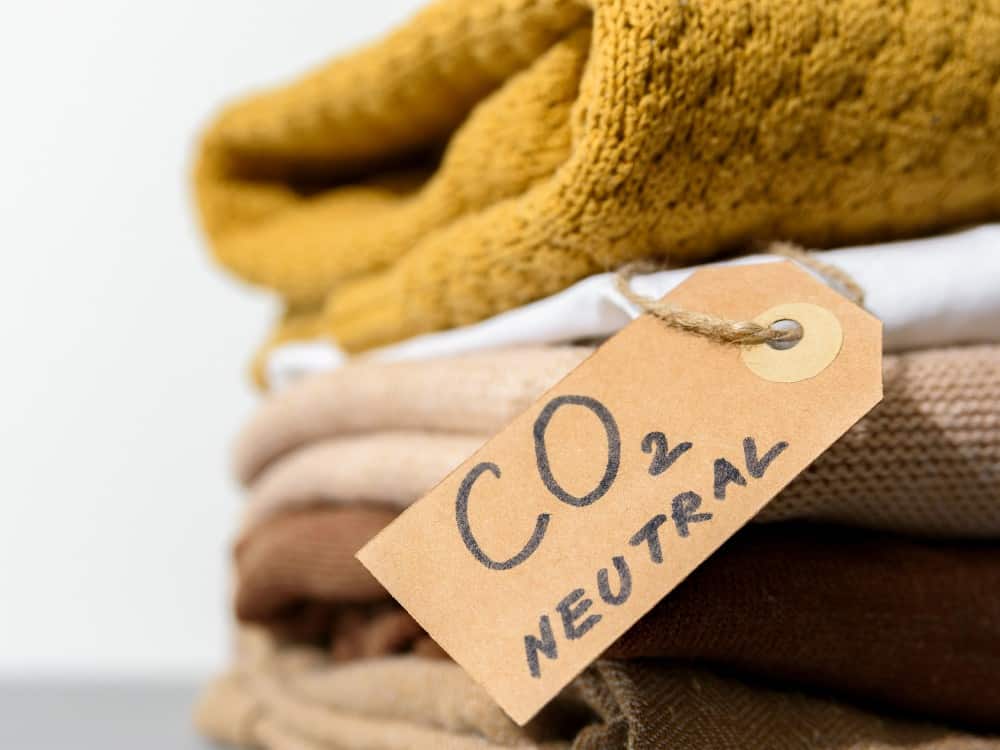
Wool is a natural fiber with many of the benefits of petroleum-based synthetics—like its moisture-wicking ability and temperature regulation.
It’s a durable fabric that biodegrades naturally and doesn’t require a lot of chemicals during the processing stage. Because it accepts dyes easily, chemical use can actually be omitted in favor of natural, sustainable dyes.
However, most animal agriculture has been associated with environmental degradation and land clearing—and this includes operations that raise sheep for wool.
On the other hand, sheep farming is part of a growing world of regenerative agriculture in which sheep are not only raised to have minimal negative environmental impact, but in such a way that they can actually benefit it.
Still, sustainable practices alone don’t allay animal welfare and ethical concerns associated with wool production.
While some believe ethical wool isn’t achievable, we believe it is, but it’s a really high bar. Always always always look for relevant certifications and animal welfare policies at the bare minimum.
Certifications: Responsible Wool Standard (RWS), Woolmark, Certified Organic Wool, Certified Animal Welfare Approved, Certified Humane® Label, Soil Association, Climate Beneficial by Fibershed
Merino Wool
Merino sheep are different from other types of sheep in that they have wrinkly skin, which means more wool.
A lot of the world’s merino wool comes from Australia, and many operations use a gruesome procedure called “mulesing”.
Ethical merino does exist, especially if sourced from New Zealand where mulesing is prohibited.
Don’t be sheepish about asking brands for sourcing practices.
Certifications: ZQ Merino Standard, Responsible Wool Standard (RWS), Woolmark, Certified Organic Wool, Certified Animal Welfare Approved, Certified Humane® Label, Soil Association, Climate Beneficial by Fibershed
Alpaca Wool
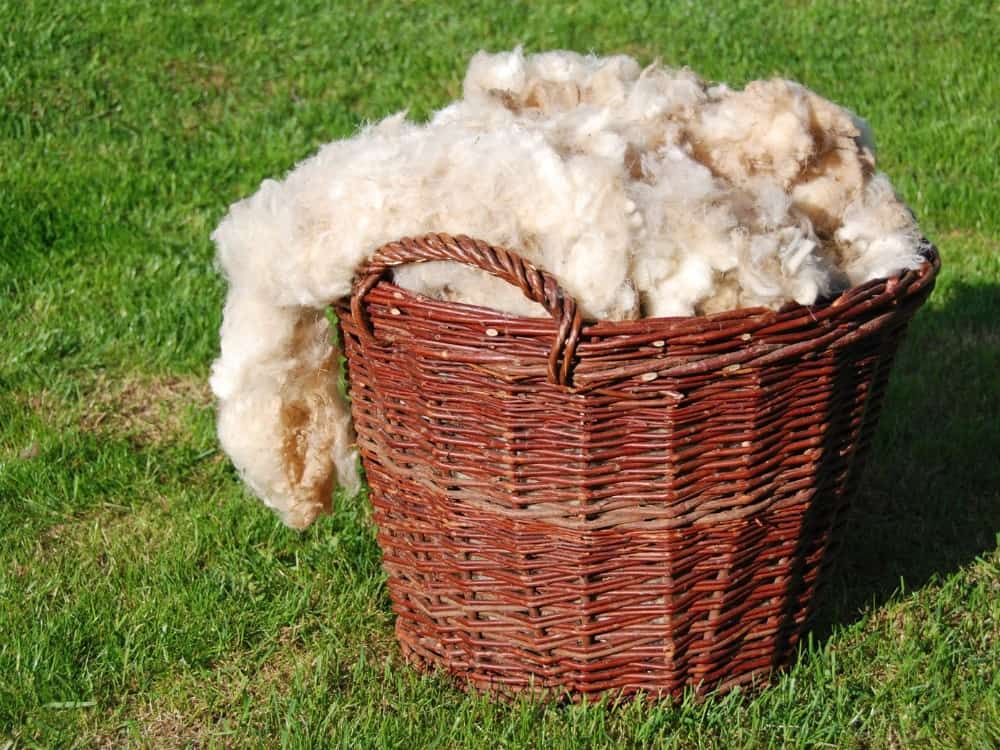
Alpaca is considered to be one of the most ethical wools.
Related to camels, most of the world’s alpaca population is still raised in their native habitat (namely Peru).
Alpacas don’t destroy their environment the way that other livestock does, and they’re efficient eaters, meaning their grazing practices don’t rip entire plants up by the roots.
Local Peruvian farmers are known for respecting and raising alpacas more humanely. In return, alpacas support local economies.
Certifications: Responsible Wool Standard (RWS), Woolmark, and Climate Beneficial by Fibershed
Cashmere
With fine fibers 15 microns in size (compared to 100 microns of human hair, cashmere is one of the world’s favorite super soft, biodegradable fabrics.
Unfortunately, it’s also associated with a lot of environmental impact concerns and ethical implications surrounding the working conditions of goat herders and ecological complications from the goat farming itself.
Cashmere goats are raised in mountainous regions of Asian countries like Mongolia, where they exacerbate desertification in already fragile alpine environments.
Cashmere can be sourced ethically and sustainably, but it’s important to read the details.
Look for those that use hand combing techniques and farms that free-range goats across large swathes of land, giving the land a chance to regenerate between grazing.
Some sustainable brands have stopped using virgin cashmere fibers in favor of recycled ones, which is our preference for any cashmere clothing.
Certifications: Good Cashmere Standard ® (GCS), Sustainable Fibre Alliance (SFA) Cashmere Standard, Kering Standard on Cashmere, Responsible Wool Standard (RWS), Woolmark, Certified Organic Wool, Certified Animal Welfare Approved, Certified Humane® Label, Soil Association, Climate Beneficial by Fibershed
Camel Wool
What are the best sustainable fabrics derived from animals?
Camel wool is on the list. Where animal welfare is a concern with other types of wool, there have been less reported cases with camels.
The type of camel used, the Bactrian camel, sheds naturally, meaning the potential for pain for the camel is reduced.
These camels are typically raised by small-scale, family farmers, which also contributes to less environmental damage.
Camel wool is biodegradable and doesn’t require dyes or chemicals during processing. Unfortunately, it’s rare to find even among brands using the most eco-friendly fabrics.
Certifications: Responsible Wool Standard (RWS), Woolmark, Certified Organic Wool, Certified Animal Welfare Approved, Certified Humane® Label, Soil Association Organic Standards, Climate Beneficial by Fibershed
Yak Wool
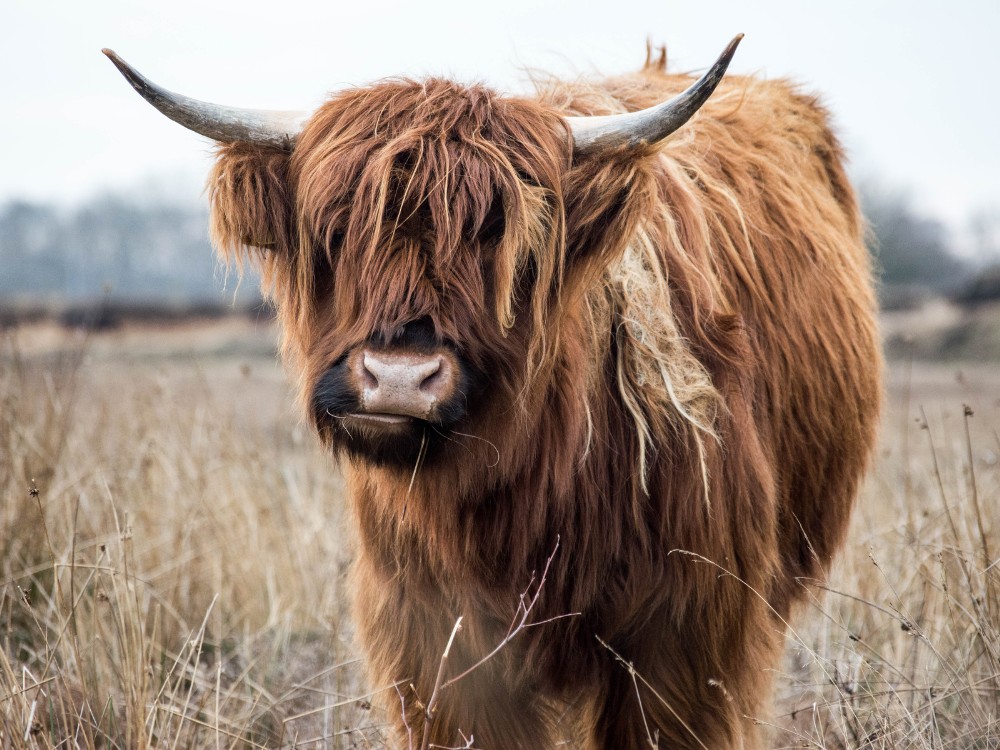
Yak wool is a sustainable alternative to cashmere that’s incredibly soft and warm—meaning you may find it in winter wardrobe items like beanies.
It’s harvested from either the outer-coat (which yields a coarser fiber) or the undercoat (which yields a softer fiber) of Yaks raised free-range on the Tibetan Plateau.
Yaks shed profusely year round, so harvesting the fur doesn’t directly involve the animal. Instead, it makes use of something that would otherwise biodegrade in nature.
It also provides extra money to the nomadic herders that look after these herds.
Certifications: Responsible Wool Standard (RWS), Woolmark, Certified Organic Wool, Certified Animal Welfare Approved, Certified Humane® Label, Soil Association Organic Standards, Climate Beneficial by Fibershed
Upcycled Or Vegetable Tanned Leather
Traditional leather uses the skin of animals, and has rightfully been criticized for both environmental and ethical reasons.
Leather comes either from directly killing 1 billion animals per year or from the meat industry as a byproduct (like much of the fish leather industry)—which is better, but still not great since the meat industry is one of the largest contributors to greenhouse gas emissions and unethical treatment of animals.
Then, the tanning process requires around 250 chemicals and heavy metals (arsenic and cyanide among them), which is equally bad for the earth as it is for the tannery workers.
Only one real sustainable option exists.
Upcycled leather is the only legitimate ethical leather, since it means making the best of a material that’s already done its damage.
If choosing virgin leather, make sure the skins are sourced as a byproduct and that they’re tanned using vegetable-based substances (or chrome-free ones at the very least).
While a more sustainable alternative, vegetable tanned leather isn’t perfect because it takes a long time to biodegrade (despite the fact that it’s a natural fiber).
Certifications: Ecolife™ by Green Hides, Leather Working Group (LWG)
Down
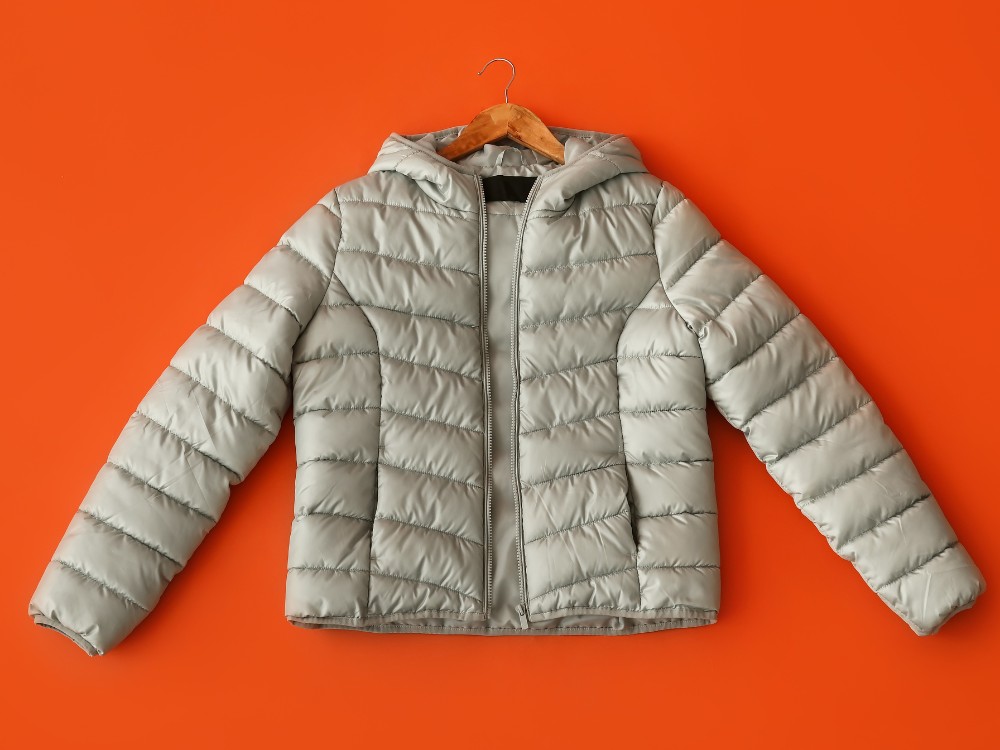
From coats to pillows, down is in high demand. But since down feathers come from ducks or geese, it’s also received a lot of scrutiny.
From a sustainability standpoint, down makes use of otherwise wasted byproducts of the global food industry.
As unpalatable as it is, billions of ducks and millions of geese are raised for meat, and using the down as a sustainable fabric for textiles is a good way to use the feathers that would otherwise go to waste.
However, like most animal agriculture, it’s been associated with inhumane practices, so we always want to look for certifications that confirm no fowl play is involved and that no animals are harmed purely for the purpose of harvesting their feathers.
That means no live-plucking in particular.
Patagonia is a brand that has put out a very clear statement about their use of down and how they ensure traceability from farm to factory.
Certifications: Responsible Down Standard (RDS), Global Traceable Down Standard
Peace Silk
Silk—so soft the material name is used as an adjective.
It not only feels great on the skin, but is good for it thanks to antibacterial properties. Being compostable, it’s also good for the planet.
It’s produced by either wild silkworms, or, in most cases, domesticated silkworms. In theory, silk production shouldn’t harm the worms, but in some cases they end up dying as a result.
Sericulture (AKA the silk industry) has also been associated with slave labor.
Some brands are experimenting with silk made of yeast, sugar, and water, but until this becomes a more viable option, peace silk is the more sustainable alternative to conventional silk.
Peace Silk uses a humane type of sericulture and verifies its production under the World Fair Trade Organization Guarantee system.
Also known as Ahimsa silk, the nonviolent production process allows the silkworm to live a natural and humane life and eventually evolve into a butterfly—after which the silk is harvested.
The silkworms are bred under natural conditions (with no fungicides, sprays, or insecticides) and are able to emerge on their own and carry on with their lives.
Certifications: OTEX-Certified Organic Silk
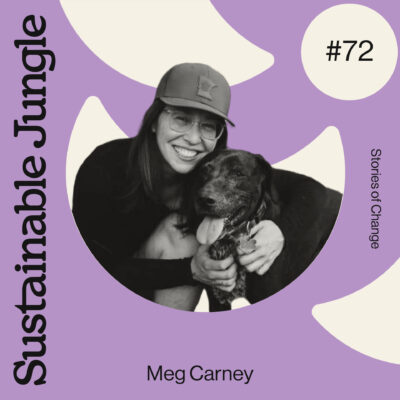
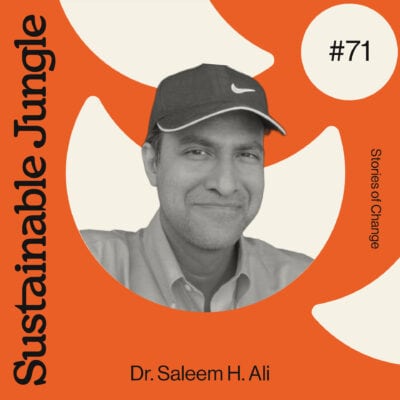

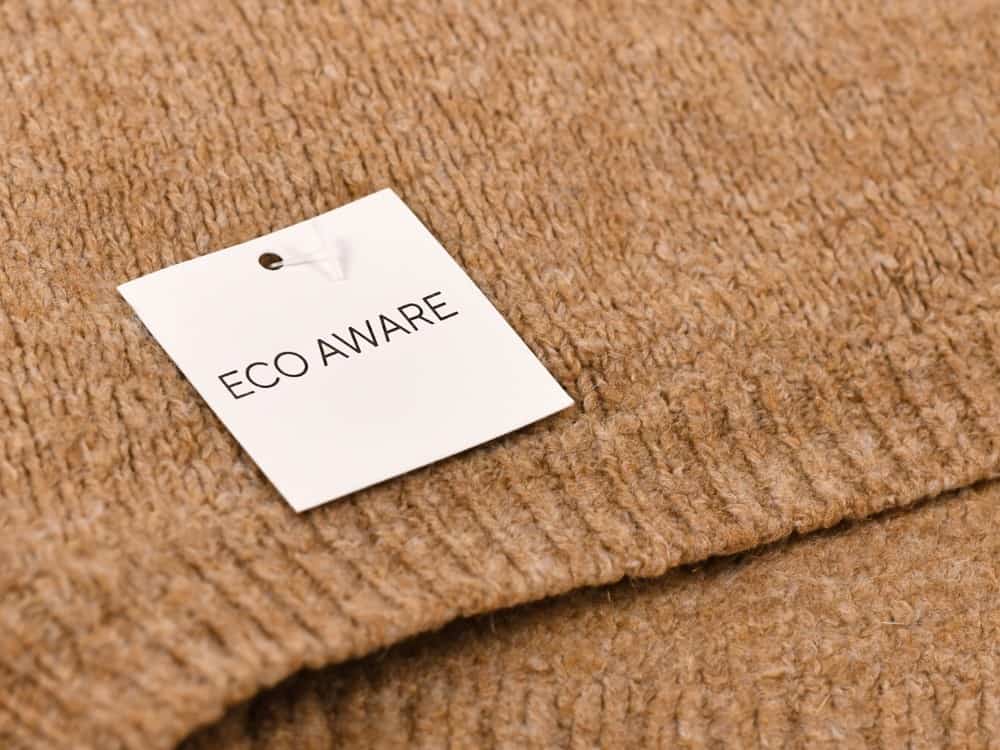
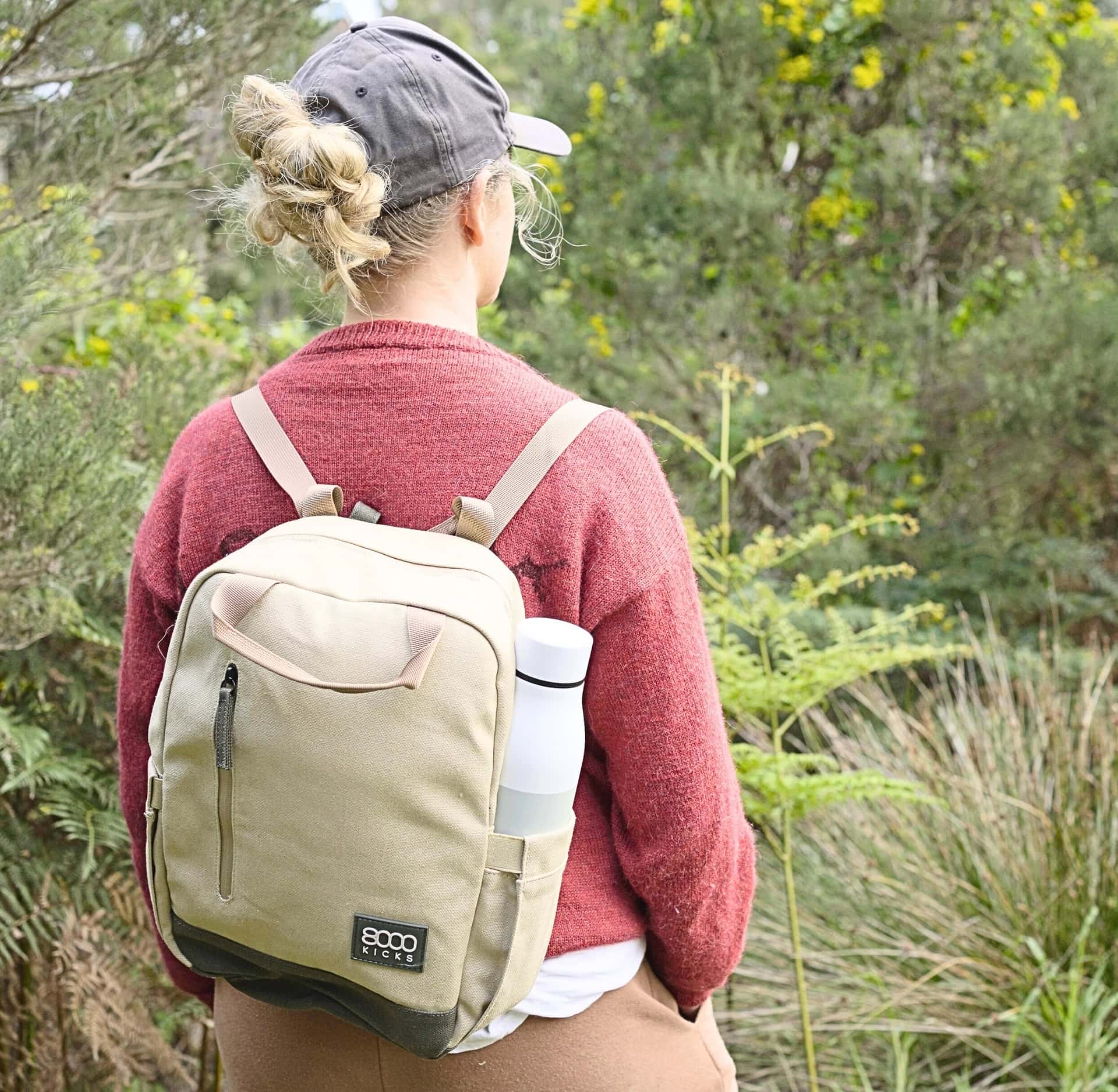
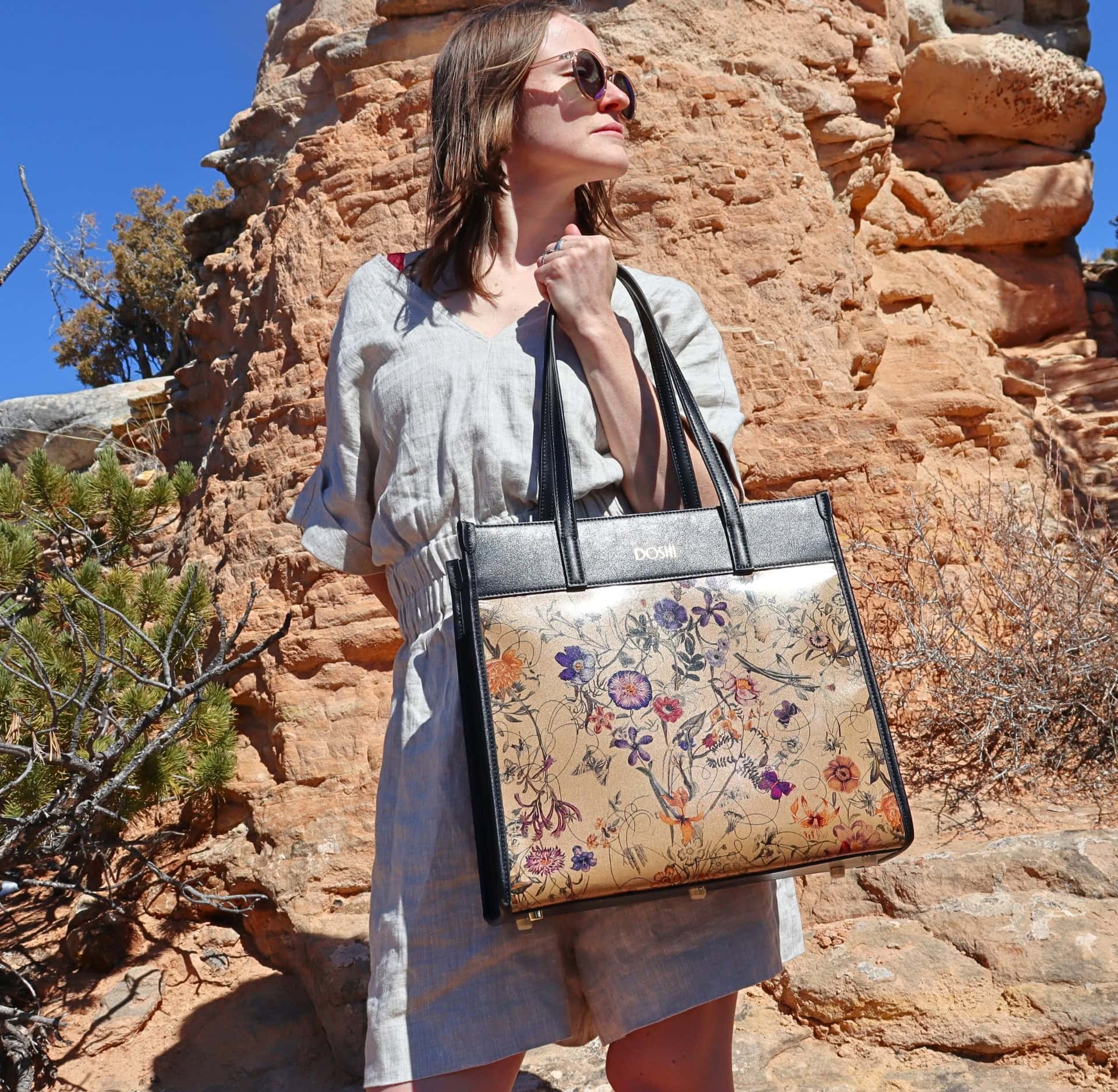
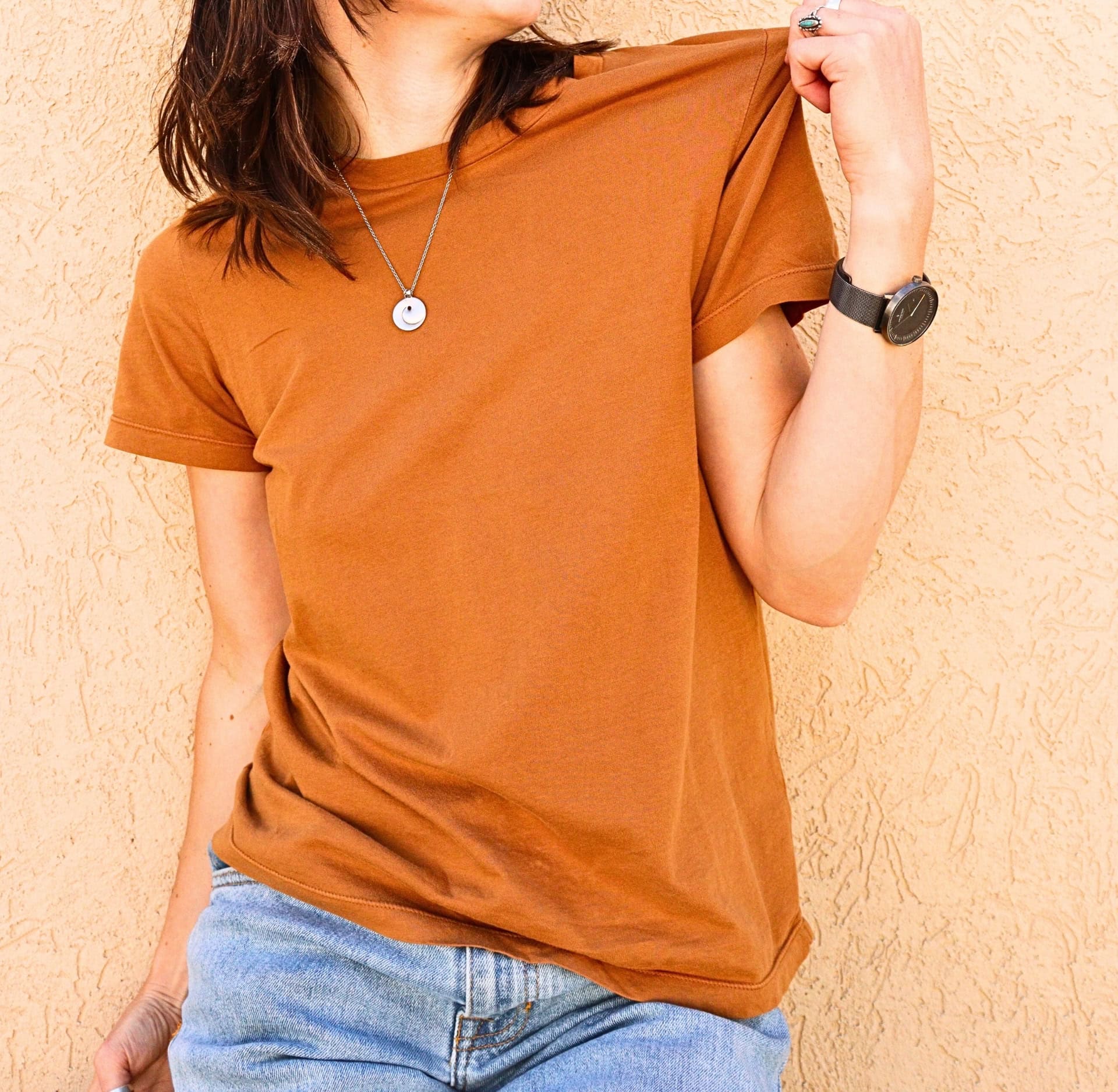

Hello, In your research did you come across any 4-way stretch fabrics that are durable, like for mountaineering pants or rock climbing pants? I am having a very difficult time finding this. Thank you!
Hemp and bamboo are terrible. The chemical processes to turn these plants into cloth create substantial toxic wastes.
And how can you suggest leather, but not include fur? Are people really clueless enough to believe shaving off the hair makes leather acceptable?
If you’re OK with animal based products, then you’re OK with animal based products.
As Suzanne Sugarbaker said ‘ So if I go home tonight and have a few mink steaks for dinner, this mink coat should be OK?’
Thanks for the perspective Ivan!
What about the Desserto’s cactus leather?
A bit of an older article, but it found that Desserto was the worst out of the bio leathers.
we also need to spread this awareness at every fashion colleges, so as much as next generation designer will aware ,can at least think about it ,use it in their future work,and can start small change in our industry,we also need to change the thoughts of the way of living values and human values in our society.Most of the people in our society are totally copy cat they are very fast at copying macro market fashion ,if the top level of fashion(fashion shows, forecasting,trend setters,etc.) will follow or accept sustainability in right way then they will definitely try to copy and also aware of it, because normal people don’t know about it, they are very busy with their schedules but one thing they never forget to search that what’s in trend and fashion going on ,we should take advantage of this way to send that message(need of sustainability in human being life to save our life from fast extinction) to more and more people and fast too.
Very interesting!!
What about Remeant recycled Bubble wrap and Aluminum?
How about jute?
How can I find all the mentioned fabrics, from where can I buy them?
Can you please upload links for buy option of the fabrics?
What about the Desserto’s cactus leather?
Thanks for sharing! Yea that looks super interesting hey! We’ll take a look next time we do an update of this article.
I’ve learned they use Polyurethane, though- as do most alternative leathers. Mostly plastic, less bio material.
Source: http://thecircularlaboratory.com/plant-based-plastic-leathers-an-update-according-to-science
A bit of an older article, but it found that Desserto was the worst out of the bio leathers.